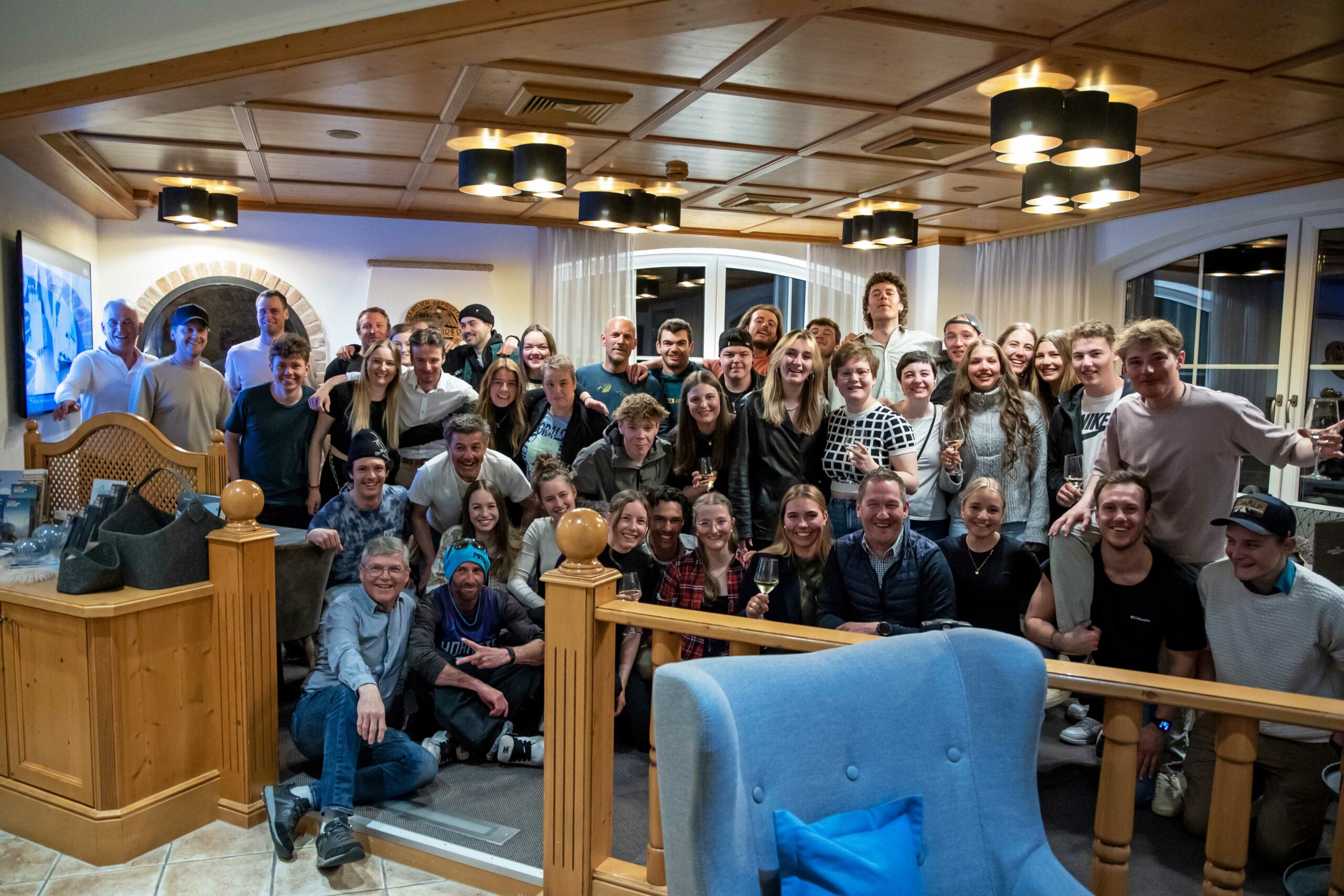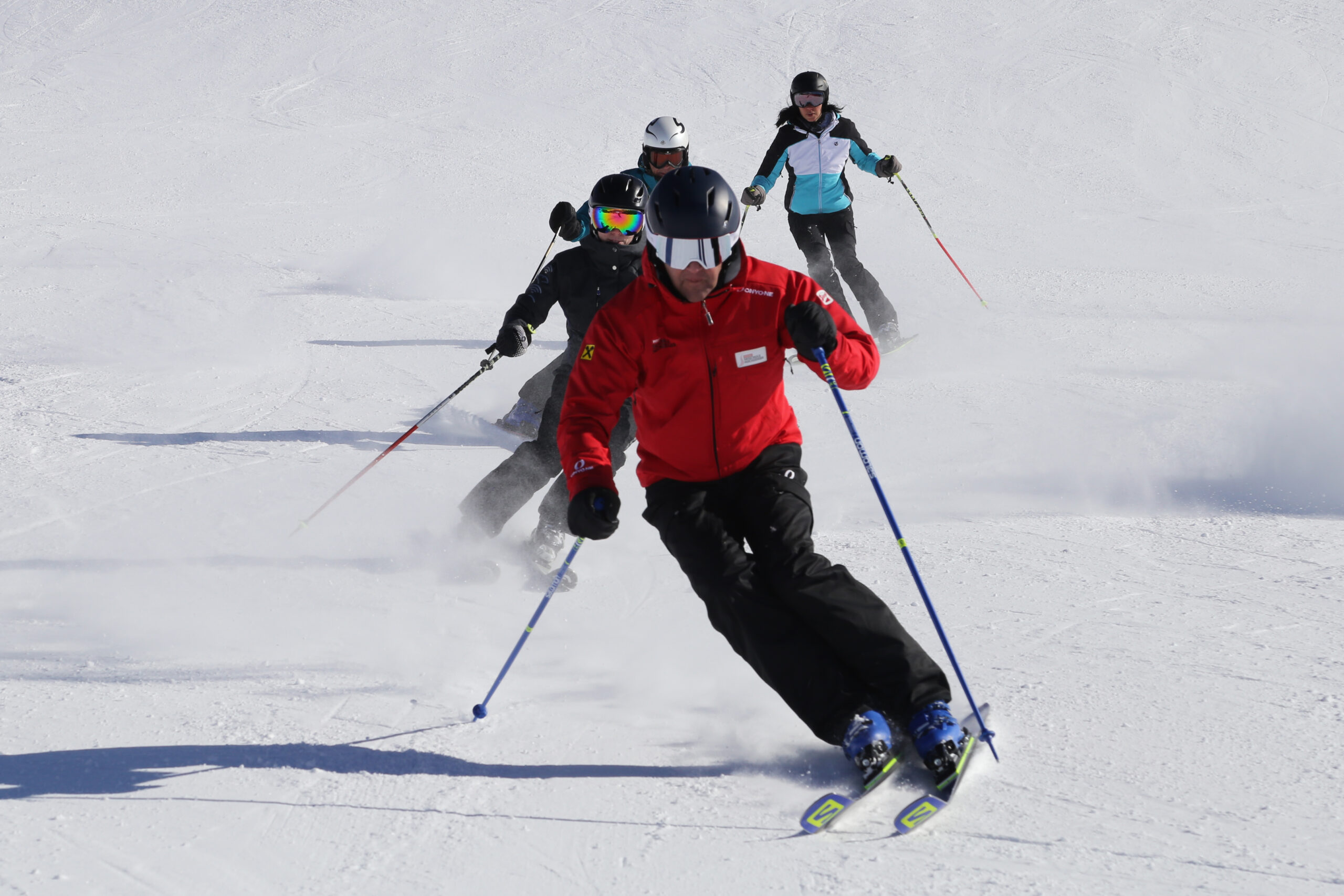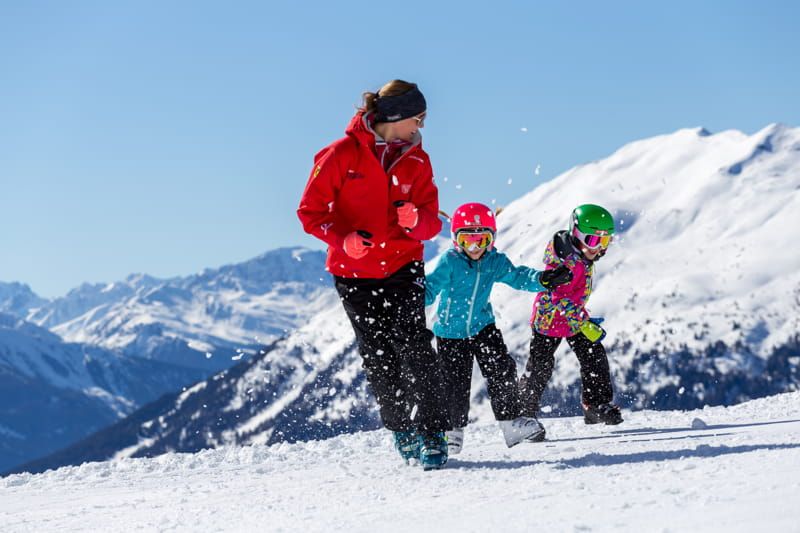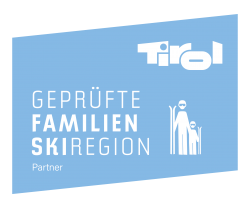The ski slope difficulty levels explained.
The coloured markings of the ski slopes represent the levels of difficulty combined with the average steepness of the slope. For people unfamiliar with skiing we want to explain the various slope markings and difficulty levels of the slopes in the Alps. We will also provide more information about other things, which are important to know for the right behaviour on the slopes in ski areas.
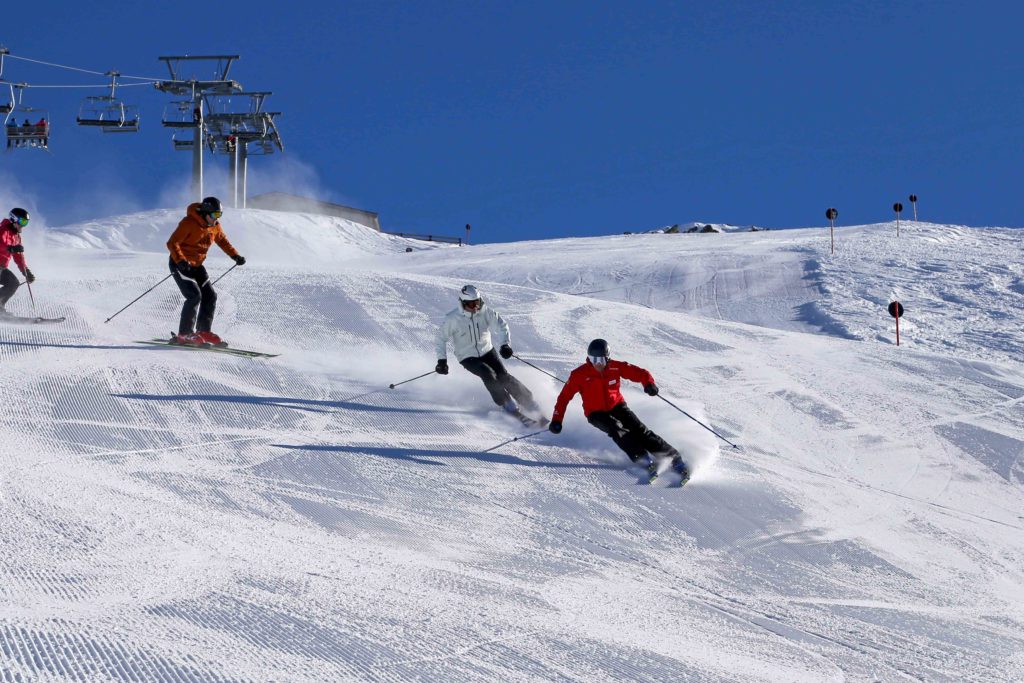
1. Blue slopes: Easy and beginner-friendly
The blue ski slopes are easy, relatively wide and have a gentle gradient. Ski beginners who can brake using the snowplough technique, and make slight turns can slowly try to ski on a blue ski slope. If the ski area owns a short practice lift (like a pommel lift), this is the best place for the first descent on a blue slope.
There are three practice lifts (pommel lifts) in the ski area Hochzeiger, where our ski school is located.
2. Red slopes: For intermediate and advanced skiers, snowboarders
Red ski slopes are a bit more difficult. Only experienced and advanced winter sports enthusiasts should venture onto these moderately steep slopes. The maximum gradient (length and width) of a red-marked ski slope can be up to 40%. Due to this steepness, you need a certain level of skiing technique and experience to ski safely on these slopes.
The width of red-marked slopes ranges between wide and quite narrow sections. Diverse terrain is often offered on these slopes (e.g. hills).
3. Black slopes: Demanding and only for professionals
The black slopes in the Alps are demanding and can have a gradient of more than 40%. This steepness requires much experience, an expert skiing technique and a good physical condition to ski safely on these slopes.
Even professionals can sometimes reach their limits on these slopes.
These three levels of slope difficulty (blue, red and black) are standardized in the Alps. These ski slopes are groomed, controlled and protected from alpine dangers.
Some ski areas offer “green-marked” areas or ski slopes, especially for beginners. In the ski area Hochzeiger, there is a green-marked “Easyline”. This way represents the simplest and easiest ski descent from the mountain station to the middle station of the ski area.
Our ski school has its own practice areas for both skiers and snowboarders, all of them are equipped with „magic carpets“. The use of this area is reserved for participants in our ski and snowboard courses.
Difference between ski slope, ski route and back country
• Ski slopes are marked, groomed and controlled slopes in a ski area. The difficulty levels of these ski slopes in the Alps are marked with blue, red and black.
• A ski route is practically the intermediate stage between a ski slope and backcountry. Ski routes are marked and secured descents in a ski area but aren´t groomed. So you need good skiing skills to ski in this terrain with changing surfaces (deep snow, mogul slopes, hills, …).
• The backcountry is neither prepared nor marked nor controlled. To be able to move around in this terrain, you not only need the appropriate, excellent skiing technique but also the necessary knowledge of alpine dangers (e.g. avalanche situations).
It should be emphasized that backcountry should never be underestimated!
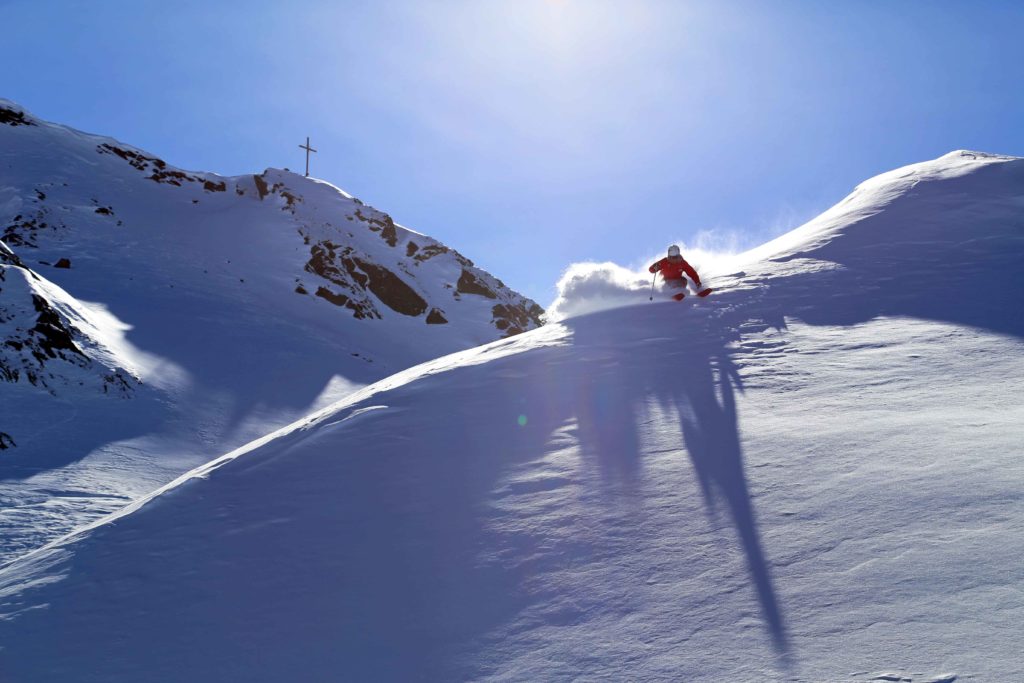
Conclusion
Our family-friendly ski area Hochzeiger in Jerzens in Pitztal offers a wide range of ski slopes with different difficulty levels (red, blue, black and ski routes) for all winter sports enthusiasts. Due to the height of the ski area (90 % of the slopes are over 2,000 m above sea level), we can offer snow security until Easter.
So, pack your suitcases and visit us and the ski area Hochzeiger in Pitztal!




